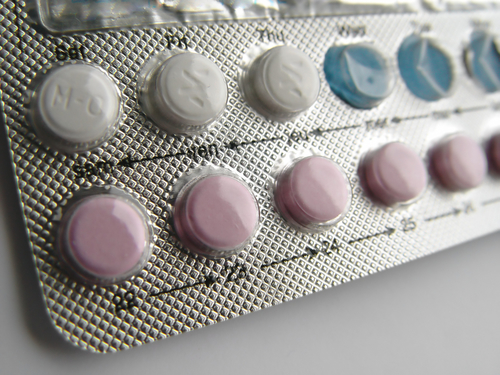Birth Control Pills (BCP’s) contain synthetic version of the natural ovary-produced hormones estrogen and progesterone. Generally, the pills are considered safe. They have been used for over forty years and are one the most extensively studied medication in the United States. It’s important to note the dosages of pills have been markedly reduced, resulting in a decrease in some of the more unpleasant side effects. Currently prescribed pills contain approximately one-tenth the amount of medication used in the pills of the 1960’s.
Most patients report minimal or no side effects, but there are a few to be aware of.
MINOR SIDE EFFECTS
• Spotting or Breakthrough Bleeding
• Weight Gain
• Breast Swelling and Tenderness
• Increased appetite
• Depression/Mood Changes
• Headaches
• Yeast Infections
• Scant or Missed Periods
SERIOUS SIDE EFFECTS
• High Blood Pressure
• Slight Increased Risk of Breast Cancer
• Formation of Benign Liver Tumor
POTENTIALLY DEADLY SIDE EFFECTS
• Formation of Blood Clots
Women on BCP’s are slightly more prone to form blood clots than the general population. The clots can form in veins or arteries and can occur in legs, abdomen, heart, lungs, eye or brain. A blood clot can result in pulmonary embolus, a heart attach or stroke. If a clot forms in the brain, it can lead to stroke. If a clot forms in the legs, it can lead to a pulmonary embolus (clot in the lungs) which can be deadly and sometimes occur without warning
WARNING SIGNS OF A BLOOD CLOT (ACHES):
• A – Abdominal pain
• C – Chest pain, shortness of breath
• H – Headaches (new, severe, or associated with dizziness, difficulty speaking, fainting, numbness or weakness in extremities)
• E – Eye Problems (blurred vision or loss of vision)
• S – Severe leg pain (and/or redness and swelling of calf and/or thigh)
Certain women are more at risk than others. A higher risk falls upon women who smoke, are over the age of thirty five, those who have a personal or family history of blood clots, or individuals with a personal history of cardiovascular disease, high blood pressure or triglyceride/cholesterol abnormalities
Blood clots (especially to legs/lungs) can be successfully treated. Early intervention can save lives.
BLOOD CLOT DETECTION:
• In the legs, ultrasound
• In the lungs, CT scan
• In the brain, MRI or CT scan















lawrlwytho reals instagram
brezplačen insta downloader slik za mac
viktoria kay
natasha aughey
download instagram video
https://www.twitagra.com
types of ear piercings chart
walk in piercing places